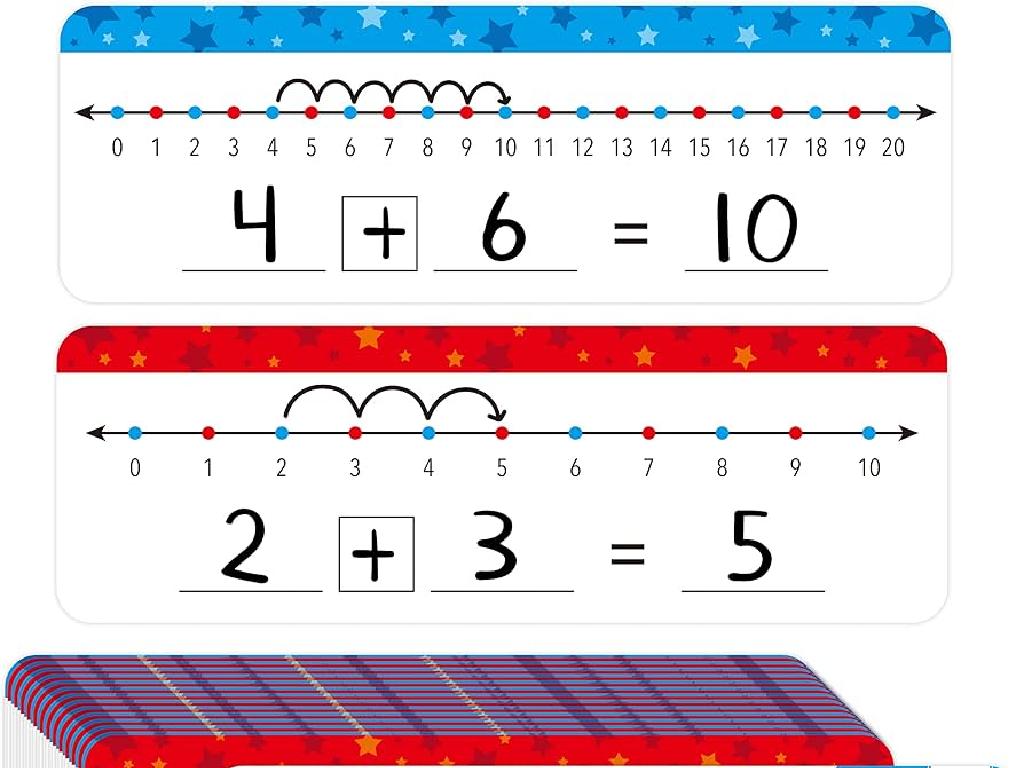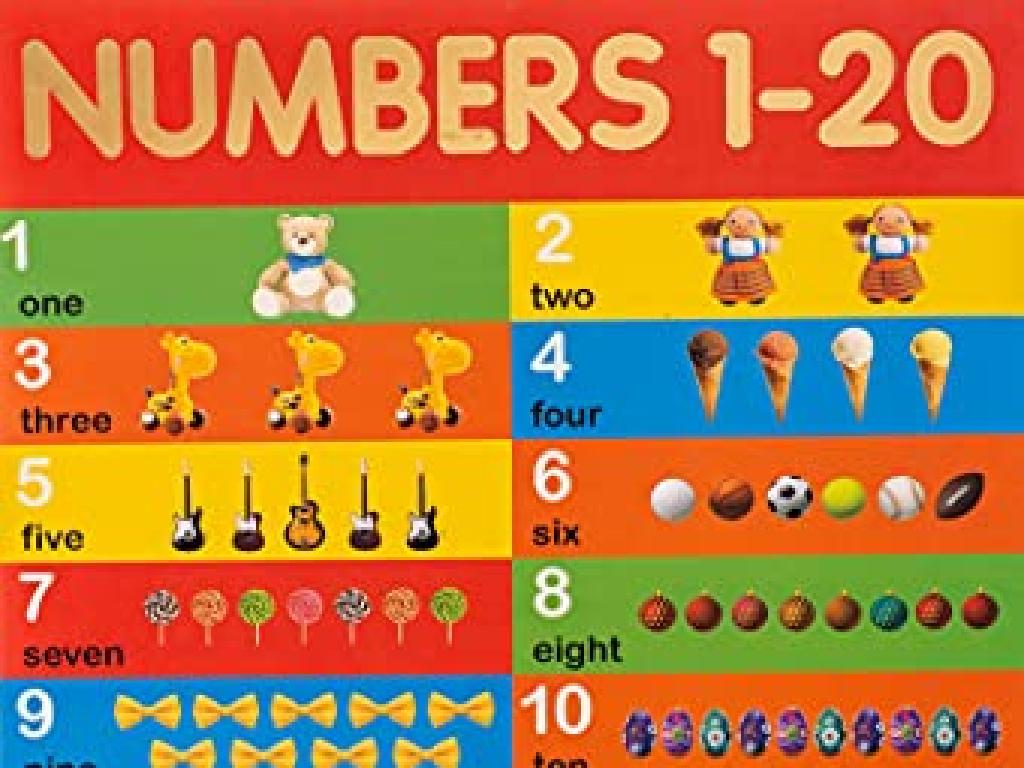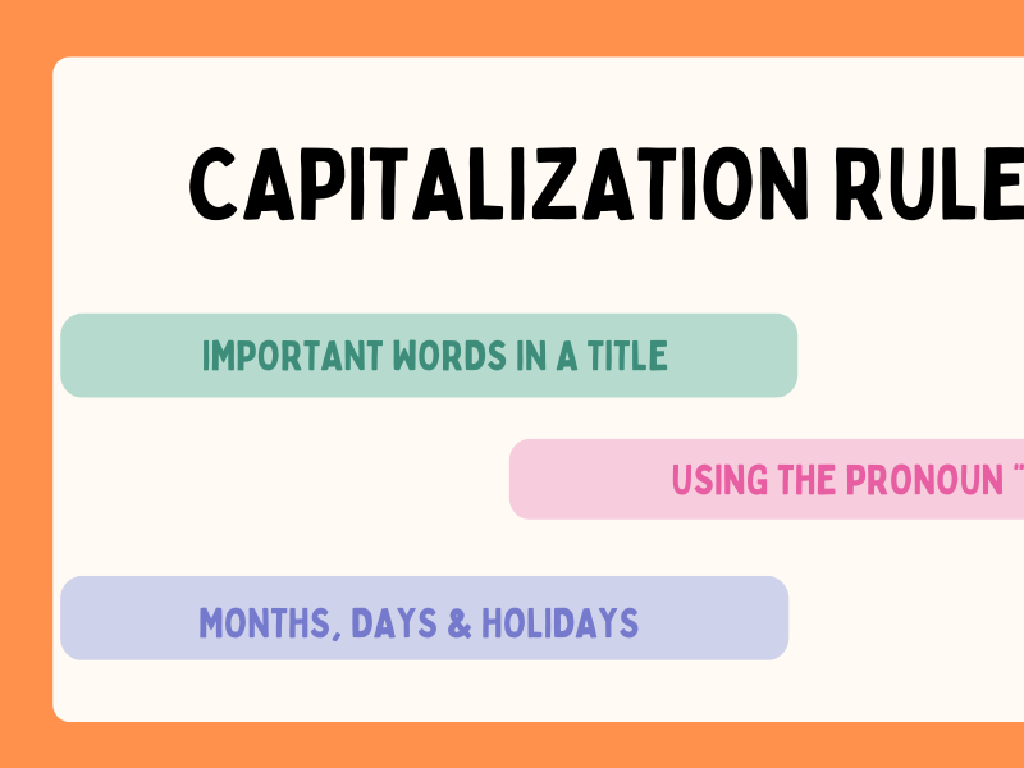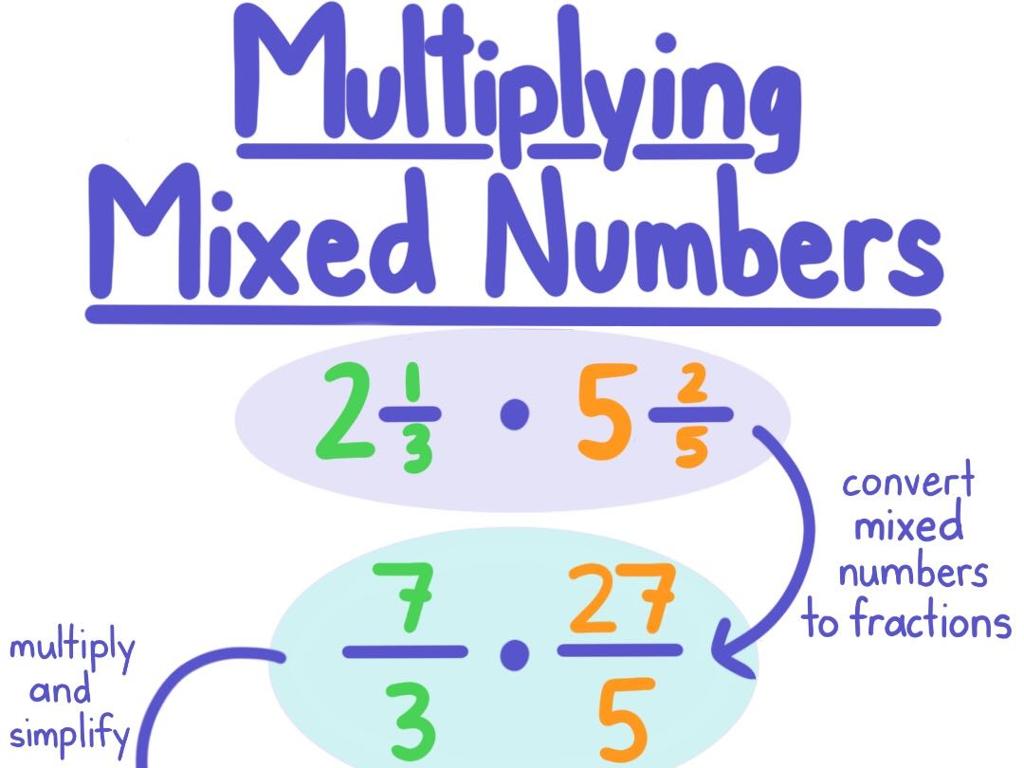Evaluate Numerical Expressions Involving Fractions
Subject: Math
Grade: Seventh grade
Topic: Operations With Fractions
Please LOG IN to download the presentation. Access is available to registered users only.
View More Content
Evaluating Numerical Expressions with Fractions
– Grasping the concept of fractions
– Fractions represent parts of a whole
– Today’s goal: Evaluate expressions with fractions
– Using operations like addition, subtraction, multiplication, and division
– Mastering fraction calculations
– Solve step-by-step to simplify expressions
– Real-life application of fractions
– Examples: cooking, budgeting, measuring
|
This slide introduces the importance of understanding fractions and sets the stage for today’s lesson on evaluating numerical expressions involving fractions. The objective is to ensure students can solve expressions that include fractions by applying mathematical operations. Emphasize the relevance of fractions in everyday life, such as in recipes or financial planning, to help students appreciate the practicality of the skill. Provide a step-by-step approach to solving fraction problems, starting with simpler examples and gradually increasing complexity. Encourage students to ask questions and work through practice problems to solidify their understanding.
Review of Fractions: Understanding the Basics
– What exactly is a fraction?
– A fraction represents a part of a whole
– Numerator vs. Denominator
– Top number (numerator) / Bottom number (denominator)
– Classifying fractions
– Proper (less than 1), Improper (more than 1), Mixed (whole number + fraction)
– Converting between types
– Practice changing improper to mixed, and vice versa
|
Begin with a quick review of what a fraction is, emphasizing its role in representing parts of a whole. Clarify the roles of the numerator and denominator, ensuring students understand that the numerator indicates how many parts are being considered, while the denominator shows the total number of equal parts in the whole. Discuss the differences between proper, improper, and mixed fractions, providing examples for each. Teach students how to convert improper fractions to mixed numbers and vice versa, as this skill is crucial for operations involving fractions. Include practice problems to reinforce these concepts and prepare students for evaluating numerical expressions involving fractions.
Mastering Fractions with PEMDAS
– Recall PEMDAS sequence
– Parentheses, Exponents, Multiplication/Division, Addition/Subtraction
– Apply PEMDAS to fractions
– Follow the sequence for fraction operations
– Example: 1/2 + (2/3 * 3/4)
– First, multiply 2/3 by 3/4
– Simplify step by step
– Add 1/2 to the product of 2/3 and 3/4
|
This slide introduces the concept of Order of Operations, commonly remembered by the acronym PEMDAS, and its application to evaluating expressions with fractions. Start by reminding students of the correct sequence: Parentheses, Exponents, Multiplication and Division (from left to right), and Addition and Subtraction (from left to right). Emphasize that the same rules apply when working with fractions. Use the example 1/2 + (2/3 * 3/4) to demonstrate the process. Multiply the fractions within the parentheses first, then add the result to 1/2. Walk through each step, ensuring students understand how to simplify fractions before combining them. Encourage students to solve the example step by step and verify their answers with a partner.
Adding and Subtracting Fractions
– Find a common denominator
– A shared multiple of the denominators, e.g., for 4 and 5, use 20.
– Example: Add 3/4 + 2/5
– Convert to 15/20 + 8/20 = 23/20 or 1 3/20
– Example: Subtract 5/8 – 1/4
– Convert to 10/16 – 4/16 = 6/16 or 3/8
|
This slide introduces students to the concept of finding a common denominator when adding or subtracting fractions, which is essential for combining fractions accurately. Start by explaining that a common denominator is necessary to ensure the fractions are talking about the same-sized parts. Then, walk through the examples provided, showing how to convert each fraction to an equivalent fraction with the common denominator before performing the addition or subtraction. Emphasize the importance of simplifying the resulting fraction if possible. Encourage students to practice with additional problems and to always look for the simplest form of their answers.
Multiplying and Dividing Fractions
– How to multiply fractions
Multiply the top numbers (numerators), then multiply the bottom numbers (denominators).
– How to divide fractions
To divide, multiply by the inverse (reciprocal) of the second fraction.
– Example: Multiplying 3/5 by 4/7
3/5 * 4/7 = 12/35 after multiplying numerators and denominators.
– Example: Dividing 2/3 by 1/6
2/3 ÷ 1/6 = 2/3 * 6/1 = 12/3 = 4 after multiplying by the reciprocal.
|
This slide aims to teach students the process of multiplying and dividing fractions. Start by explaining that to multiply fractions, they simply need to multiply the numerators (top numbers) together and then the denominators (bottom numbers) together. For division, they should multiply by the reciprocal of the second fraction. Use the examples provided to illustrate these concepts with actual numbers. Encourage students to simplify their answers if possible. This slide should help solidify their understanding of fraction operations, which is a key skill in handling algebraic expressions involving fractions.
Complex Expressions with Fractions
– Combine operations with fractions
– Example: (3/4 + 1/2) – (2/3 * 3/5)
– First, add 3/4 and 1/2, then multiply 2/3 by 3/5
– Follow PEMDAS order
– Parentheses, Exponents, Multiplication/Division, Addition/Subtraction
– Solve expressions step by step
– Show each step: find common denominators, simplify, then subtract
|
This slide introduces students to evaluating complex numerical expressions that involve fractions. Start by explaining how to combine different operations such as addition, subtraction, multiplication, and division when working with fractions. Use the example provided to illustrate the process. Emphasize the importance of following the order of operations (PEMDAS) to solve expressions correctly. Walk through the example step by step, showing how to find common denominators for addition and subtraction, and how to multiply fractions directly. Encourage students to always simplify their answers. This slide sets the foundation for solving more complex problems involving fractions.
Evaluating Expressions with Fractions
– Solve 1/2 + 3/4 * (5/6 – 1/3)
– First, find the difference (5/6 – 1/3), then multiply by 3/4 and add 1/2
– Solve (7/8 – 5/6) ÷ (1/2 + 1/4)
– Subtract (7/8 – 5/6), then divide by the sum (1/2 + 1/4)
|
This slide presents two practice problems to help students apply their knowledge of operations with fractions. For Problem 1, guide students through the order of operations, starting with the parentheses. Remind them to find a common denominator for subtraction within the parentheses, then multiply, and finally add to 1/2. For Problem 2, they should again find a common denominator to subtract the fractions, then add the fractions in the divisor before performing the division. Encourage students to simplify their answers. These problems will reinforce their understanding of fraction operations and the importance of following the correct order of operations.
Class Activity: Fraction Stations
– Break into small groups
– Rotate through different stations
– Solve fraction operation challenges
– Each station presents unique problems involving addition, subtraction, multiplication, or division of fractions.
– Collaborate and explain reasoning
– Discuss strategies and solutions within your group.
|
This class activity is designed to encourage collaborative learning and hands-on practice with fraction operations. Divide the class into small groups, ensuring a mix of abilities in each. Set up stations around the classroom, each with a different set of fraction challenges – one for addition, one for subtraction, one for multiplication, and one for division. Provide clear instructions at each station. Students will rotate through the stations, tackling the problems with their group members. Encourage them to discuss their problem-solving strategies and to explain their reasoning as they work. This will help reinforce their understanding of the concepts and improve their communication skills. Possible activities include simplifying fractions, finding common denominators, and converting mixed numbers to improper fractions before operations.
Homework and Next Steps
– Complete the fraction expressions worksheet
– Practice evaluating expressions involving fractions to enhance your skills.
– Next class: Operations with Decimals
– Get ready to learn about decimal operations in our upcoming session.
– Review today’s lesson
– Go over the concepts discussed today to solidify your understanding.
– Feel free to ask any questions
|
This slide is aimed at reinforcing the students’ understanding of evaluating numerical expressions with fractions by providing them with a worksheet to practice. It also serves to prepare them for the next topic, which will be operations with decimal numbers. Encourage students to review the material covered in today’s lesson to ensure they have a firm grasp of the concepts. Lastly, open the floor for any questions, providing clarification and support where needed. The worksheet should contain a variety of problems, some of which are straightforward and others that are more challenging to cater to different skill levels. For the next class, remind students to bring any necessary materials and to be prepared to engage with new content.






